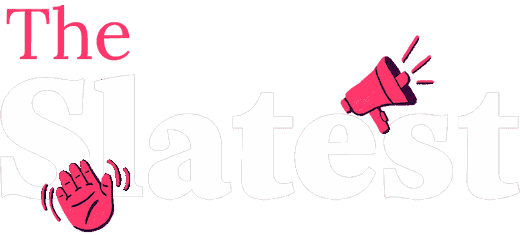Trump Demands the Ukraine War Be Finished in 50 Days. That’s Great News for Putin.

Sign up for the Slatest to get the most insightful analysis, criticism, and advice out there, delivered to your inbox daily.
How seriously should we should take President Donald Trump’s threat to punish Russia with “very severe tariffs” if Vladimir Putin doesn’t make a deal for peace with Ukraine in 50 days? Here’s a key sign: Right after Trump’s announcement, the Russian stock market rose sharply.
It seems that investors in the Moscow exchange were expecting Trump to lay down harsher measures than he did.
The deputy speaker of Russia’s upper house, Konstantin Kosachev, concurred. “If this is all Trump had to say about Ukraine today, it’s been much ado about nothing,” adding later on social media, “This doesn’t affect our moods in the slightest.”
The big loophole in Trump’s “major announcement” on Russia, as it was headlined in advance, is the 50-day deadline for Putin to lay down his arms. It means Putin can keep fighting with no penalty until Sept. 2—plenty of time to launch the “summer offensive” that he’s hoping (probably over-optimistically) will break the long deadlock and pave a road to victory for Russian troops and their North Korean allies.
True, Trump also announced on Monday that he will send Ukraine a new shipment of arms, including Patriot air-defense batteries, the only weapons that can shoot down Russian ballistic missiles. This confirms reports last week that Trump would reverse an order by Secretary of Defense Pete Hegseth to freeze arms shipments to Kyiv.
However, the Patriots and other munitions will be sold to European allies, who will in turn provide them to Ukraine. In other words, Trump hasn’t backed away from his basic position that this is not America’s war, or at least not Trump’s (it’s “Biden’s war,” he said just last week).
A cynical appraisal of Trump’s motives might surmise that, 50 days from now, Russia will have come so close to winning the war that Ukrainian President Volodymyr Zelensky will have to make a severe compromise for peace before the tariffs take effect.
In other words, Trump can thunder all he wants about how “very unhappy” and “disappointed” he is about Putin’s behavior, as he did once again on Monday at a White House meeting with NATO Secretary General Mark Rutte. “My conversations with him are very pleasant, and then the missiles go off at night,” Trump added in a bewilderingly bewildered tone.
But the significant facts are these. First, Trump seems to have taken a ridiculously long time to notice Putin’s blatant hypocrisy. Second, Trump is still holding back on doing much about it; compared with the three-week notice he gave to the European Union and Mexico, two of our leading economic partners, for when they can expect 30 percent tariffs on all of their exports, his warning to Putin is generous.
Another fact worth noting is that the U.S. imports almost nothing from Russia—just $3 billion worth of goods in 2024, less than 0.1 percent of the $3.2 trillion in goods that we import from the rest of the world. In other words, there isn’t much for Trump to tariff.
Trump did issue a potentially more serious threat—to impose “secondary tariffs,” amounting to as much as a 100 percent tax, on imports from all countries that continue to do business with Russia after the 50-day deadline. But this isn’t quite credible. Russia’s main trading partners are China and India. Is Trump really going to put a 100 percent tariff on all goods that we import from China ($563 billion worth) and India ($87 billion)? Doubtful.
In fact, given all the times that Trump has threatened to set deadlines on tariffs, then backed away, it’s hard to take seriously any threat he makes. Certainly it is hard for Putin to take them seriously. And Putin after all is the ostensible object of these threats—the man whose behavior Trump at least says he wants to sway.
Putin no doubt recalls, back in May, when Trump set a two-week deadline for Russia to get serious about peace or else. Two weeks passed; nothing happened. The European Union tried to nudge Trump into action. As an alternative, Trump opened up peace talks. The talks were scheduled; the Russians didn’t show up. Again, Trump did nothing.
A few times since then, most volubly at the meeting with European leaders on Monday, Trump has wondered out loud whether Putin is serious about peace. The real question we should all ask now: Is Trump?
The answer to both questions should be pretty obvious.
 Sign up for Slate's evening newsletter.
Sign up for Slate's evening newsletter. Slate





